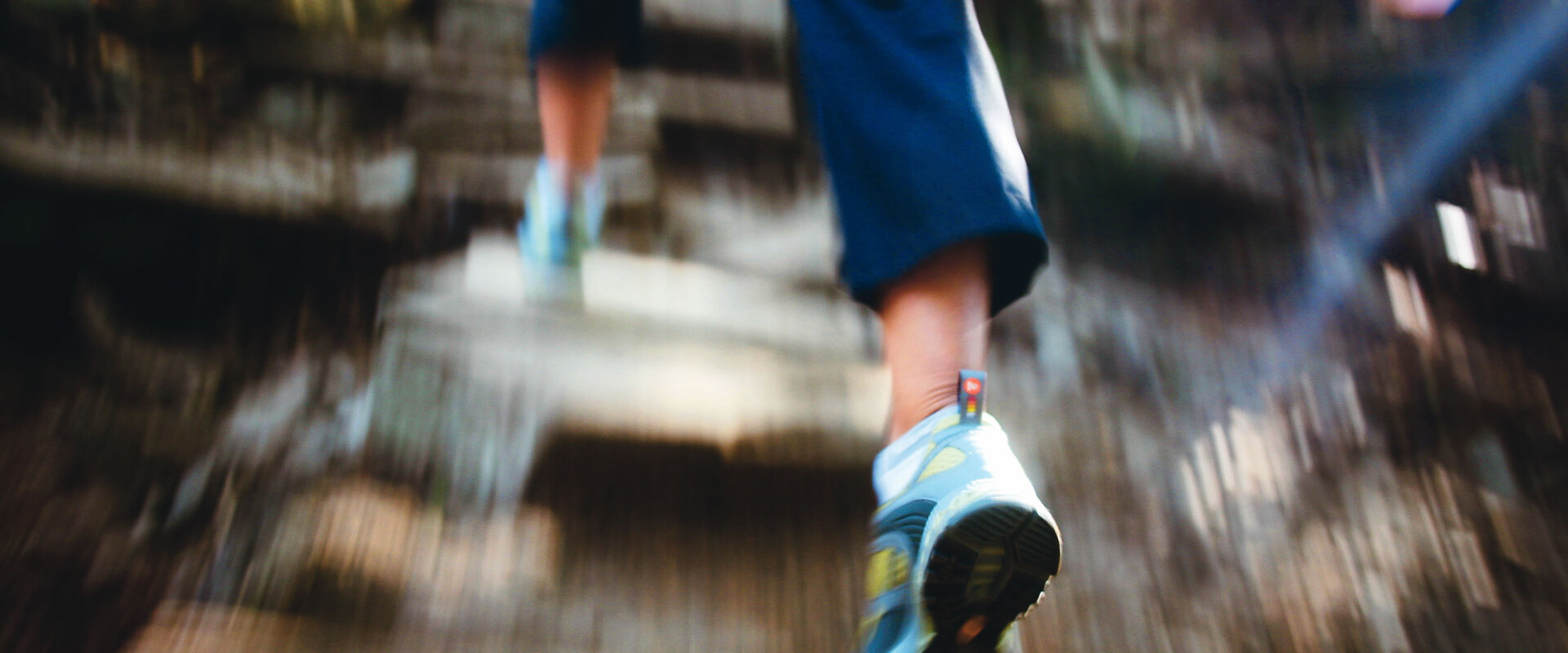
Seek the Peak Training: Injury Prevention Tips
Posted by Grouse Mountain May 15, 2017
Our 14th annual Seek the Peak race is fast approaching we want to make sure you have all the info you need to rock those race day hills. Stay tuned as we share some helpful training and preparation tips to support your journey, all the way to the Peak!
Today we're sharing some helpful tips about injury prevention at all stages of the training journey from Timberly at City Sports & Physiotherapy Clinic.
Top 5 Pre-run & mid-race injury prevention tips
1. Warm-up – Before any given run, you need to ensure your nervous system, muscles, tendons, ligaments and joints are ready for the load you are about to put on them to avoid shock to the system. A slow jog is not enough to warm things up. Legs swings, marching drills, hurdler steps, lateral shuffles, and lunge walking are all good examples of movements that take your lower body through a big full range of motion of all your joints, thus prepping them for the big moves of the Grind!
2. Stay warm – On race day, we often warm up, and then go stand in the starting corral and cool back down. Keep warm by jogging on the spot, doing leg swings, marching on the spot, bum to heel kicks, and short hold active stretches. If it’s a cold day, keep a jacket on that you can tie around your waist or hand off to a friend on the side.
3. Practice the ABC’s of running at least 1-2x/wk. These are running drills that work on specific components of the running stride. “A” and “C” drills are particularly helpful for trail runners as they focus on picking up your feet, and having a quick turnover. Check out this video as an example.
4. Don’t overtrain!! The number one cause of running injuries is doing too much. Listen to your body. If you’re struggling to recover from your last run/workout and are still feeling a bit sore, fatigued – take a rest day and focus on some stretching, mobility and easy core strengthening rather than going out for another run. Injuries that are lingering or keep returning are often a sign of doing too much.
5. Look up and watch where you’re going! Trail running can be technical and the tendency is to look down at your feet the whole time. This changes your posture and can affect your running efficiency. As well, looking ahead allows your brain to recognize that there is a log or rock or root up ahead that you need to step over.
Top 5 R’s of Recovery for Post-run and race injury prevention tips
1. Resist the temptation to stop moving! Try to keep moving, just walking slowly, for at least 10-15 minutes after crossing the finish line (or after any run). You’ll be less likely to cramp up and develop stiff sore muscles. Then allow yourself a few minutes of stretching your quads, hamstrings, buttocks and calves.
2. Re-fuel! Get some nutrition in you. Fueling your muscles within the first 15 minutes will help with muscle recovery and regeneration. So while you walk to cool down, head over to the food table and grab a banana, snack, and some water, even if you don’t feel hungry.
3. Rehydrate. Continue drinking fluids throughout the day. You might not feel thirsty now, but you likely will later. Hydrated muscles are happy muscles.
4. Rejuvenate! Come visit us at the recovery tent!! City Sports & Physiotherapy will be there to assess any aches, pains, and injuries that may have happened, as well as to provide post-run recovery massages. We will have foam rollers, massage sticks and balls to help you with your own recovery.
5. Recover appropriately before your next big/long/hard run! Too many runners get injured from not giving their bodies enough rest after a hard race. A good rule of thumb is to take 1 day off running for every mile you raced. That doesn’t mean no exercise, but keep all activity to a low intensity, focus on light cross training, and lower volume during that time.
- Timberly George Ambler, BScPT, BScKin
For more information on Seek the Peak and to register, click here.
